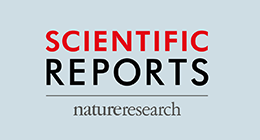xerostomia_data_082118.csv (520.84 kB)
Regional dose/volume metrics in salivary glands and oral cavity for head and neck cancer (HNC) patients with xerostomia
dataset
posted on 2019-03-05, 00:33 authored by Peijin Han, Pranav Lakshminarayanan, Wei Jiang, Ilya Shpitser, Xuan Hui, Sang Ho Lee, Zhi Cheng, Yue Guo, Russell Taylor, Sauleh Siddiqui, Michael Bowers, Khadija Sheikh, Ana Kiess, Brandi Page, Junghoon Lee, Harry Quon, Todd McNuttThis analytic dataset consists of a single .csv data file holding, for 258 head and neck cancer (HNC) patients, dosiometric features in volume increments derived from a radio-morphologic feature generation pipeline. The features are based on derived subvolumes of the salivary glands. Patient demographic details are also included.
The related study seeks to further understanding of xerostomia (dry mouth) in patients undergoing radiation therapy (RT), specifically the regional dosimetry of normal structures involved in xerostomia. The investigation considers dose-volume histogram (DVH) regional dose/volume metrics patterns between xerostomia injury and recovery.
The study compares the regional radiation dose distribution among HNC patients that developed xerostomia within 6 months of radiotherapy and those recovered from xerostomia within 18 months postradiotherapy. 258 patients' data are included in this dataset, based on HNC patients with both parotid and submandibular glands contoured between 2007 and 2017, excluding those with a pre-existing xerostomia injury, those whose xerostomia assessments were not available at 18 months of follow-up and patients who had melanoma.
Variables include 22 derived subvolumes, including ipsilateral/contralateral PG (iPG, cPG), ipsilateral/contralateral SMG (iSMG, cSMG), ipsilateral/contralateral OC (iOC,
cOC), which form the prefix of the DVH feature column headers. The features are calculated in 10% volume increments from D10 (dose covering 10% of subvolume) to D90 (dose covering 90% of subvolume) - these form the suffixes for the DVH column headers. e.g.
| "ipsioc_d80". |
The final five columns identify the relevant site for each sample.
The following clinical factors were also included in the models: age at start of RT (≤ 65, > 65), gender (male, female), race (white, African American and other), had ever received chemotherapy (yes, no), tumor site (nasopharynx, oral cavity, oropharynx, hypopharynx and larynx), volumes of salivary glands pre-RT (iPG, cPG, iSMG, cSMG) and volumes of oral cavity surrogates (iOC and cOC).
Values are coded to protect individual identities.


